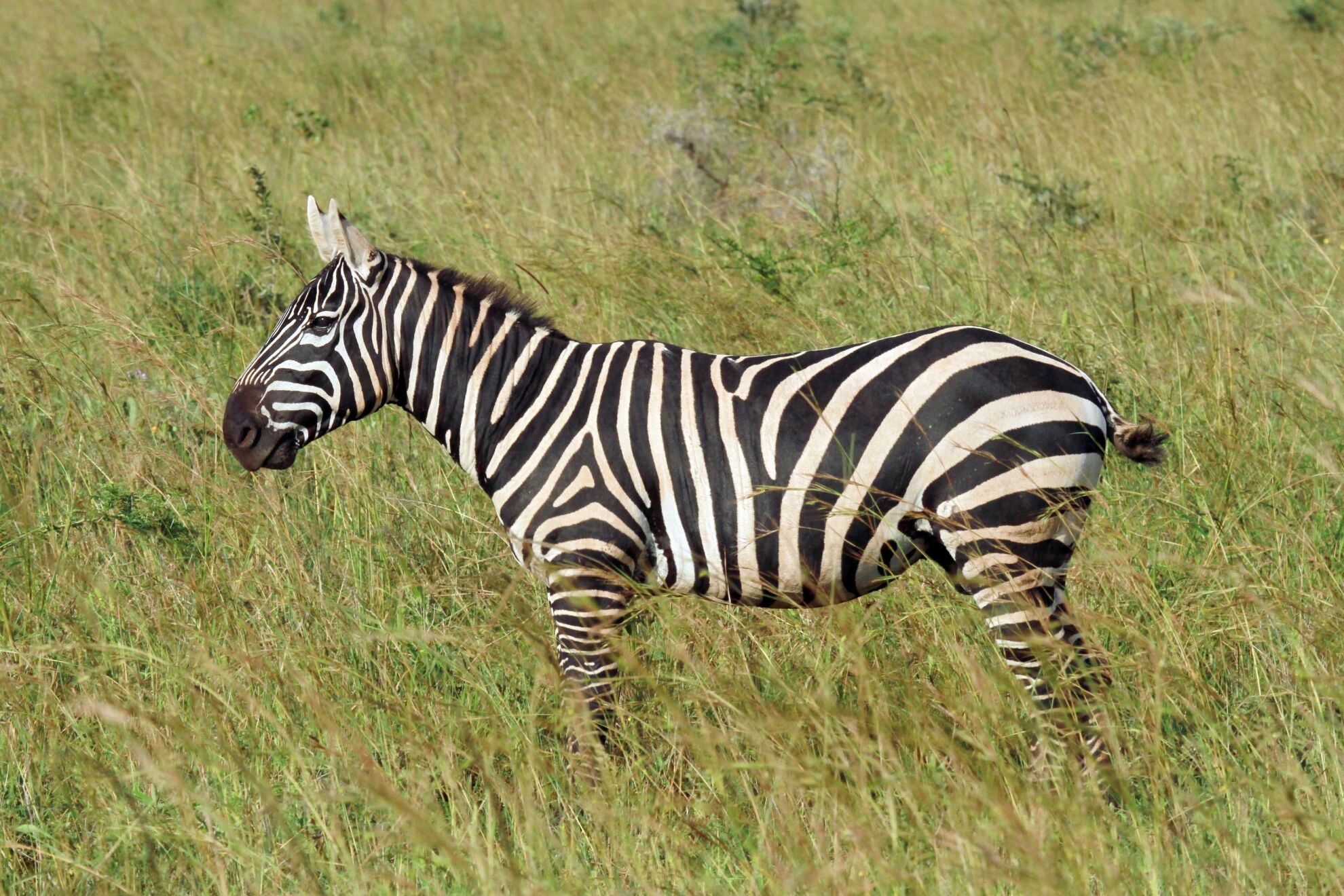

No African hunt is complete without bagging one of the most striking African plains game species there is, namely the zebra. The maneless zebra (Equus quagga borensis) is one of six recognized subspecies of the plains zebra (Equus quagga)
Found in Kenya, South Sudan, Sudan, and Uganda, this subspecies prefers habitats of treeless grasslands, and savanna woodlands, avoiding habitats with forests, deserts, and permanent woodlands. They are nomadic and non-territorial and more active during the day, sleeping and resting at night while sentries stand guard over the herd. They live in family units of 4-6 animals with large herds only staying together for short periods.
Also known as the “half-maned zebra,” this herbivorous African plains game species eats a diet of herbs, twigs, leaves, and grasses, staying in areas with easy access to water sources as they drink daily.
The herd constantly on the lookout for danger and threats, including predators. When spotted, they bark or snort to alert the others. Predators include lions, spotted hyenas, and African wild dogs.
Their IUCN status is non-evaluated.
Name:
Equus quagga borensis
Male Weight:
485-709 pounds
Male Shoulder height:
4,1- 4,5 ft
Range:
Northern East Africa
Mating:
Throughout the Year
Gestation Period:
360-396 days
Life span:
25 years
Maneless zebra adult males weigh between 485-709 pounds. This species has a dumpy body with relatively short legs, with a short-haired tail becoming longer-haired near the tip. Their ears stand upright with rounded tips, and the males of the species have thicker necks. While females and young zebras have very short manes, the manes are reduced or absent in the half-maned zebra stallions.
This subspecies of plains zebra has bold black and white stripes, as well as a fully striped underbelly and legs. There may be some shadow striping present, with lighter gray or brown bands present between the black and white stripes.
Targeting this African plains game species is often undertaken through the walk-and-stalk and spot-and-stalk options. The Maneless zebra also prefers to be close to water for daily drinking, making that a perfect spot to ambush them at the waterhole.
This subspecies often mixes with other African plains game species, such as the wildebeest and Topi, resulting in more eyes and ears on the lookout for danger. This results in a more challenging stalk approach for hunters and the test of approaching the animals undetected.
The reward of harvesting one of Africa’s most iconic species speaks for itself, and the lovely hide as a reminder of the hunting adventure is the perfect addition to any trophy room.
When on your zebra hunting in Africa, ensure that you are comfortable with your chosen rifle and can shoot accurately to ensure an ethical, human kill. Popular rifles for a zebra hunting safari are 30 caliber rifles with a minimum bullet weight of 150 grain, or higher velocity rifles like the 7mm or 300 win-mag. A .375 can also work well to bring down this spectacular plains game species on your African hunt.
Search from our range of Hunts across various popular destinations in Africa.
Find A Hunt